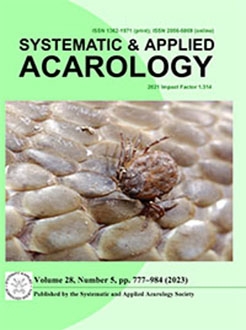Predatory mites are important biological control agents for phytophagous mites and several small insect pests on vegetables, while the control efficiency is often limited by the changeable or fluctuating environment, especially under the threat of global warming. To mitigate the undesired impacts of high temperature environment, a high-temperature adapted strain (HTAS) of the predatory mite Neoseiulus barkeri (Hughes) was screened from a conventional strain (CS) by long-term heat acclimation (35°C) and regular heat hardenings (45°C). In this study, to investigate the molecular mechanisms of enhanced thermotolerance in HTAS N. barkeri, four mitogen-activated protein kinase (MAPK) pathway genes were identified from the predatory mite N. barkeri. The expression levels at different developmental stages showed four MAPK pathway genes were highest at adults and lowest at eggs or nymphs in both strains. Under 42°C high temperature stress, the expression levels of four identified MAPK pathway genes increased rapidly at a short time in both N. barkeri strains and the magnitude of expression increase in HTAS N. barkeri was even more evident. In addition, the MAPK pathway genes expression in CS N. barkeri sharply decreased following longer exposure periods at 4 h, whereas the expression in HTAS N. barkeri remained elevated after 4 h. These results suggested that MAPK signaling pathway participated in the formation of thermotolerance in predatory phytoseiid mites, which provided new insights in promoting the biological control efficiency of predatory mites under changeable environment.
How to translate text using browser tools
26 May 2023
Activation of MAPK signaling pathway genes leads to promoted thermotolerance in a high-temperature adapted predatory mite Neoseiulus barkeri (Hughes)
Chuanbei Tian,
Guang-Yun Li,
Mian Wang,
Hanqiu Chen,
Yishu Ding,
Gang Chen,
Yaying Li,
Yuzhen Nima,
Huai Liu
ACCESS THE FULL ARTICLE

Systematic and Applied Acarology
Vol. 28 • No. 5
May 2023
Vol. 28 • No. 5
May 2023
MAPK signaling pathway
Neoseiulus barkeri
Thermal exposure response




